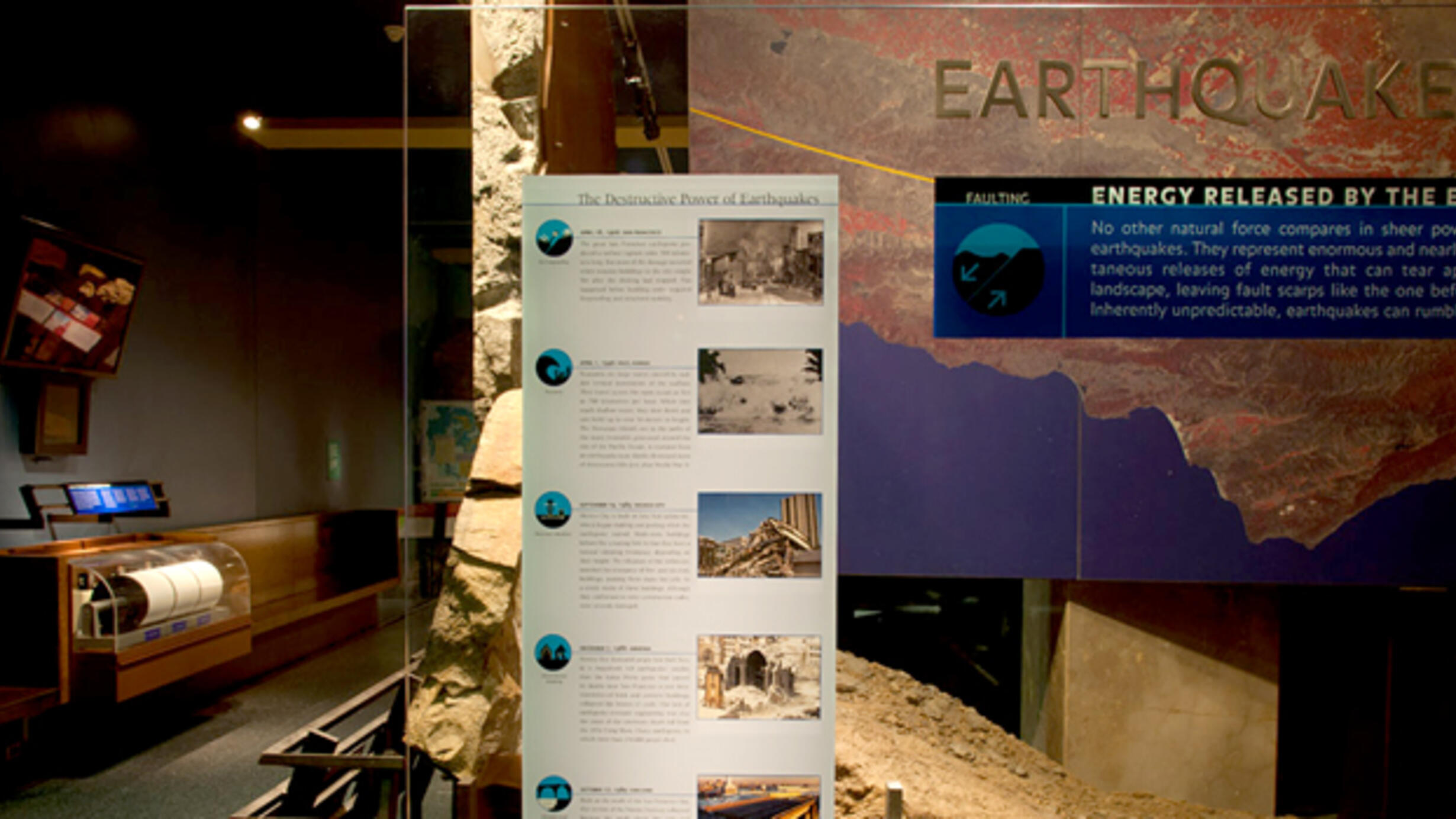The destructive power of earthquakes
Part of Hall of Planet Earth.
Part of Hall of Planet Earth.

April 18, 1906: San Francisco
The great San Francisco earthquake produced a surface rupture some 300 kilometers long. But most of the damage occurred when wooden buildings in the city caught fire after the shaking had stopped. This happened before building codes required fireproofing and structural stability.
April 1, 1946: Hilo, Hawaii
Tsunamis are large waves caused by sudden vertical movements of the seafloor. They travel across the open ocean as fast as 700 kilometers per hour. When they reach shallow water, they slow down and can build up to over 30 meters in height. The Hawaiian Islands are in the paths of the many tsunamis generated around the rim of the Pacific Ocean. A tsunami from an earthquake near Alaska destroyed most of downtown Hilo just after World War II.
September 19, 1985: Mexico City
Mexico City is built on lake bed sediments, which began shaking and jostling when the earthquake started. Multi-story buildings behave like a tuning fork in that they have a natural vibrating resonance, depending on their height. The vibration of the sediments matched the resonance of five- and six-story buildings, making them shake like jelly. As a result, many of these buildings, although they conformed to struct construction codes, were severely damaged.
December 7, 1988: Armenia
Twenty-five thousand people lost their lives in a magnitude 6.8 earthquake, smaller than the Loma Prieta quake that caused 62 deaths near San Francisco a year later. Unreinforced brick and concrete buildings collapsed like houses of cards. This lack of earthquake-resistant engineering was also the cause of the enormous death toll from the 1976 T'ang Shan, China, earthquake, in which more than 250,000 people died.
October 17, 1989: Oakland
Built on the muds of the San Francisco Bay, this section of the Nimitz Freeway collapsed because the muds shook like jelly and amplified the ground motion. A structurally identical section of the Nimitz Freeway nearby, built on stiffer sand and gravel deposits from an ancient river, withstood the shaking.
October 17, 1989: San Francisco
When wet sediment made of sand or silt-size particles shake, they liquefy, losing their strength completely (as also happens with quicksand). Part of the Marina district sits on sand that was used to fill a lagoon for the 1912 Panama-Pacific International Exposition. This landfill liquefied, causing structures built on it to collapse.